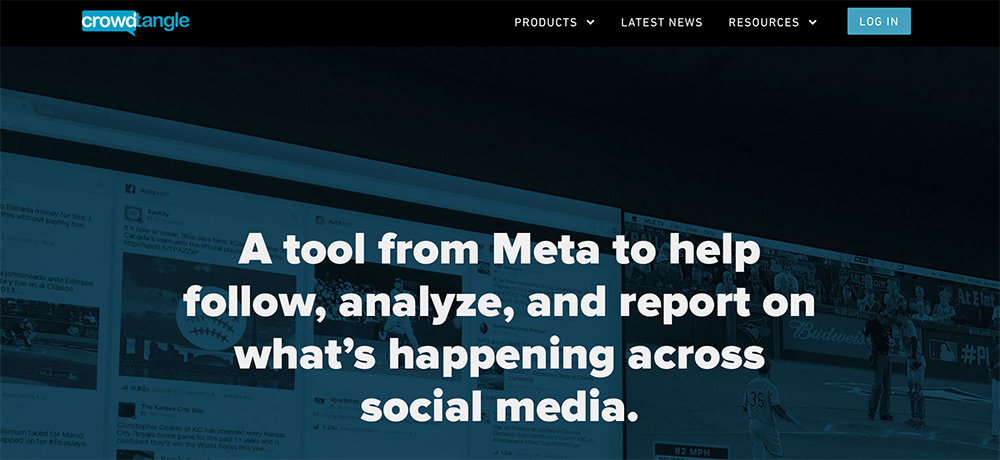Social Media platforms like Facebook, Instagram or Twitter can be very useful for journalistic research. But their use goes beyond reporting on singular posts or popular hashtags. They are networks where people connect, and these connections can be useful if you want to know what kind of information is circulating in certain “bubbles” on social media, or where a certain hashtag has come from, for example.
There are several tools that help you not only to look for specific content but also investigate who has shared that content and what kinds of accounts are connected to each other.
Crowd Tangle
Crowd Tangle is one of the most popular and easy tools to do that. It doesn’t require any programming skills and can be used via an add-on in Google-Chrome.
What You Can Do with It:
- Track trends, hashtags and shared links on social media
- Investigate the origin of posts, hashtags and links (for example if you want to know the source of hoax stories or a viral video)
- Works on Facebook, Instagram, Reddit and Twitter

What It Does:
Crowd Tangle is a database that collects information about public accounts on Social Networks. It monitors Facebook, Twitter, Reddit and Instagram, and automatically adds public accounts, groups and posts that pass a certain threshold of popularity to its database. This means that not all public posts or accounts can be found in the database. Only Facebook accounts with more than 100.000 likes, followers or members are automatically added, as well as public Instagram accounts with more than 75.000 followers. Public accounts that are verified are automatically added as well.
Crowdtangle is operated by Meta, and the big database, where you can also add smaller accounts that you want Crowd Tangle to monitor, is not available to everyone. If you are a journalist you can ask for access permission, but that might not be granted.
Available for everyone is a slimmed-down version of the big database. The so-called Crowd Tangle Chrome-Extension or Link Checker. It is an add-on for Google Chrome and you can use it to see how often a link has been shared, who shared it, and what the posts said exactly. You can export this data as csv-files to analyze it systematically. (Read more about data-analysis and why it is a highly useful skill for journalists in our chapter on Data Journalism.) But you can also investigate the provided information by hand and look at the first time that a link appears in the database, for example.
It is important to keep in mind that Crowd Tangle is a filter tool that has certain restrictions. It does not portrait the exact share-history of a certain link or post. It only displays the part of the history that was added to the database. It also comes with other limitations, such as only providing historical data of the last seven days for Twitter posts. These limitations are not a problem per se, as long as you are aware of them, critically reflect how they might impact the information you receive, and report on that impact when you convey the information to your audience.
What It Does Not:
If you are looking for buried or overlooked information that has not gone viral but might still be important for your story, Crowd Tangle is not the right tool for you, because it does exactly the opposite: tracking popular content. If you want to know how to look for specific or buried content on social media, we’ve got you covered as well: just head over to our Chapters dedicated to research on Twitter, Facebook or TikTok.
If you want to know how you can verify user generated content such as videos or images, head over to our Chapter on verification techniques!
More Tools to Track Interactions on Social Media Platforms
Crowd Tangle comes with its limitations; for example, you need to be logged in to Facebook to use it and the data is filtered by Meta. For Facebook and Instagram it is the only available tracking tool, but for Twitter and Reddit there are other options:
rTweet: A package for the programming language R which you can use to automatically access and search Twitter data. You could for example visualize the frequency of Tweets for hashtags over time or search for Tweets with certain keywords.
TWINT Project: A scraping tool or package for the programming language Python that allows for a wide range of information from searching for certain hashtags or keywords to filtering sensitive information like email-addresses or phone numbers.
Social Blade: Provides growth, engagement and viewership numbers for platforms such as Facebook, Instagram, Twittern, Youtube, Twitch and TikTok. This can come in handy when you want to report about stories such as how content creators react to or benefit from the coverage of certain topics or talking points.
BuzzSumo: A provider that is especially useful to analyze the backlinks of websites, thus allowing you to analyze which other pages a website is providing links to, and which links it is being provided by others.


